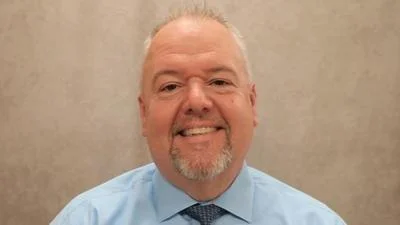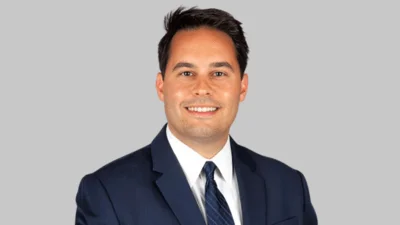Street “takeovers” in Chicago continue, drawing hundreds to meet-ups to watch stunt driving known as “drifting.” Recently three were killed in a gang-related shooting at a drifting event in Chicago’s Brighton Park community. Criminal and violent disorder on the city’s streets encompass far more than drifting. But the Brighton Park triple homicide should be a showstopper.
It’s a wake-up call about the unauthorized confiscation of our public ways for private purposes. Chicago’s drift into lawlessness won’t change until its political leadership takes charge of the city’s streets.
Adding to the chaos on Chicago’s public ways are drag-racers who may kill the odd spectator, and a dramatic surge in car thefts to 14,899 by October 23rd. That’s 83 percent more than last year to date and 104 percent more than in the same span of 2019.
It gets worse still. Chicago carjackings are currently projected to total over 1,800 by year’s end. It would be triple 2019’s total and more than any year since 2001 except for last year’s 1,848 carjackings.

Reported expressway shootings in Cook County this year numbered 123 as of October 27, already almost more than double the year-end total of 51 in the last pre-Covid pre-George Floyd year of 2019.
Chicago does a lot more in motorized mayhem than just cover the bases with street takeovers, vehicle thefts, carjackings, and expressway shootings. Chicago innovates.
We have catalytic converter theft rings making their rounds in vehicles, protected by armed gunmen. Carjacked vehicles are deployed for armed robbery sweeps. And there’s a new dystopian twist – pedestrian kidnappings by armed robbers who snatch their victims into vehicles first.
Due to politics, taking care of business suffers. Timid gestures have to suffice.
On drifting, Mayor Lori Lightfoot and the City Council are playing small ball. They keep talking up a barely-used ordinance they approved in July. It targets “drifters” and drag racers for vehicle impoundments and fines.
But this year through August there’d been more than 1,800 drifting incidents reported to police and only 26 vehicle impoundments. That’s a really lousy batting average considering the dozens and often hundreds of cars at each event.
It’s one more “Broken Windows” moment for Chicago. Real deterrence here would require a strong show of force and authority.
- There’d have to be cadres of uniformed cops in cars surrounding “drifting” events quickly.
- They’d likely need to impose their own roadblocks to exit routes and maybe even lay down spike strips around the events to further deter fast getaways.
- There’d need to be armadas of tow-trucks immediately hauling away vehicles gathered for “drifting” conclaves.
- A drifting crackdown would also likely require the changing of laws to grant lightning-fast city impoundment authority for vehicles at drifting or drag racing events rather than today’s cumbersome and slow bureaucratic process.
Such remedies listed above are both essential and politically explosive. Our city’s putative leaders have already retreated so far from maintaining public order that drastic steps are required on a number of related fronts. The drifting problem stems from Chicago’s greater drift – toward enshrining dangerous havoc over broader prosperity. They can’t co-exist.
Alderman and mayoral candidate Raymond Lopez said, “what we’re seeing is the merging of this drag racing circuit with gang life. And now, those ramifications are unfolding on our streets…right now, they know that we are doing everything as passively and as weakly as possible.”
The political calculus of enabling rampant disorder.
Behind the scenes the political calculus by Mayor Lori Lightfoot and Police Chief David Brown – despite their public support for police – is clearly driven by an activist culture of complaint that cripples cops and city officials. They’re leery of political witch trials for alleged “systemic racism” and “over-policing.” It’s all buttressed by a criminal courts breakdown in Cook County and recent state legislation called the SAFE-T Act that targets police and all but ends pretrial detention.
Lightfoot and Brown did the political math early on. They first abandoned the pretense of law and order in the summer of 2020. That’s when rioting, looting and a violent crime pandemic wracked Chicago after George’s Floyd’s death. That detachment, that hedging of bets, by Lightfoot and Brown continued this summer after crowds at drifting and drag-racing events repeatedly attacked police vehicles with impunity.
A harrowing example of the city’s failure to maintain a safe atmosphere for police to do their jobs came in early July. That’s when an Illinois State Police trooper reported in a dashboard video what happened after he was blocked by a “takeover” on Division Street near I-90.
The crowd advances on his blocked car and climbs on to stomp the hood. Suddenly the windshield is smashed. His voice riven with tension, the state trooper tells the dispatcher, “Oh! They just broke my window.” Quickly and ruefully he repeats that.
The attack continues. It’s visible through the badly cracked windshield as the mob’s shouting grows and fireworks loudly pop. The trooper says, “150 of them, coming at me right now. They just threw a brick. Send CPD.”
Soon the embattled trooper adds, “they’re running Chicago, toward I-90.” This is meant to tell the state patrol’s Chicago dispatcher that the mob is finally retreating.
But he might as well have stopped at, “they’re running Chicago.”
Because that’s what’s still going on.
It persists three months after that attack – and more than two years since the 2020 mobs rampaging on Michigan Avenue led Lightfoot and Brown to shamefully raise the bridges over the Chicago River in a last resort to tamp down street violence.
Law enforcement remains powerless against mob action and the taking of our city’s streets. That’s because our political leaders won’t lead. They won’t set the firm tone needed. They won’t take the political heat for maintaining law and order. It threatens their longevity and their hold on power. It’s no more complicated than that.
An Uber driver’s take on “takeovers.”
John Gurney, 52, works in finance and also drives Uber to help make ends meet. Raised in suburban Downers Grove, he lives in Chicago’s Pilsen neighborhood on the near Southwest Side. He’s a master’s grad of the Booth School of Business at the University of Chicago. The least rich of the bunch, he likes to joke. But he sees a lot, he says, from behind the wheel driving ride-share passengers.
The takeovers of the public way in Chicago for drifting and drag-racing concern him deeply.
He says the city needs to be all in, to keep streets free for their intended use.
Gurney tells Wirepoints, “as much as we focus rightfully on violent crime, a basic function of any city is to keep its infrastructure running, and keeping it safe. If you drive Uber at night in Chicago you will periodically be blocked, especially in the summer months” by drag racing and drifting gatherings.
“They take over busy streets. People just get in the middle of the intersection and they’ll watch these cars spin around, sometimes for hours.” It comes on weekend evenings which Gurney says is “prime time for entertainment in Chicago…To me it’s a sense of anarchy…It’s a complete failure.”
Due to dense car caravans on the weekend of Mexican Independence Day in mid-September this year, Gurney saw firsthand that Chicago’s downtown “was effectively shut down and police were very slow to respond. People couldn’t get in or out. Police blocked all the busy streets just as they did in 2020 when there was all the looting….On the second night of that we were on Clinton southbound, just in the West Loop, by the train stations. And there was an ambulance with the lights flashing and trying to thread its way through this traffic that’s essentially not moving.”
He continued, “Luckily there was one officer on the sidewalk who kinda came out into the street and (was)…trying to part the seas. And I’m thinking to myself, what kind of city – and I don’t know what that person in the ambulance was there for – can you imagine you have a medical emergency and you can’t get to the hospital because Mayor Lightfoot unfortunately literally lost control of the streets?”
Deterrence, wherefore art thou?
Gurney says that for Chicago to tamp it down for good, “You need significant deterrence. You need punishment that scares them.”
Earlier this year Gurney phoned in a report to 911 of a drifting gathering at Western and Ogden Avenue in Chicago. It had just started. Cars were coming from all directions. People were parking on the street, getting out to watch. There were just a few drifters, and many more watchers. Gurney noticed police came quickly right after he called. Later circling back, he found it had dispersed. He doesn’t know how quickly, though. It made him think about response times – which sadly have lagged even for the most violent crimes in Chicago.
“If…you hardly get set up and get out of the car, and the first car starts spinning and the police come and you’ve got to leave, that’s actually a pretty good deterrent…they need to come in numbers because as we know from the Brighton Park incident, some of them will be gang members, probably armed. If it’s one or two police cars, they can’t possibly counteract anything.”
It’s obvious there are deeper issues at play like de-policing and the complexities of field deployment for a force that’s shrinking and growing more demoralized daily, and with good cause. But ongoing “takeovers” – and the array of serious crimes involving vehicles in Chicago – all point to the need for a commander-in-chief who can take back Chicago’s streets.
Without that, this deeply troubled city will only slide further into the abyss.





 Alerts Sign-up
Alerts Sign-up